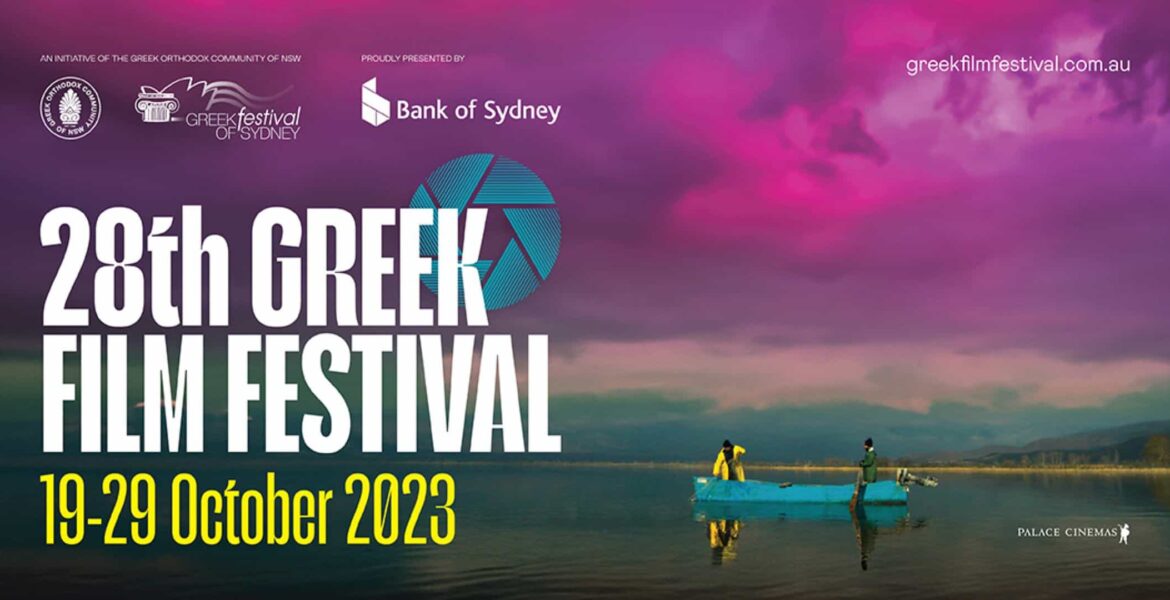The 28th Greek Film Festival opened in Sydney on 19 October at the Palace Norton Street Cinema with the showing of the acclaimed film “Behind the Haystacks” (Πίσω από τις Θημωνιές).
The Festival, a staple of Greek-Australian cultural life for almost three decades, does not disappoint.
The President of the Greek Orthodox Community of NSW, Harry Danalis, together with the Festival Chair, Nia Karteris, opened the proceedings by thanking sponsors and supporters of the Festival for contributing to its continuing success. They stressed the cultural significance of the Festival in affording filmgoers the opportunity to gain valuable insight into Greek culture through the cinema.

In his address, the Greek Consul-General in Sydney, Yannis Mallikourtis, praised the organisers for what he described as a “multidimensional and multifaceted” approach in showcasing different genres of Greek films and documentaries. He stressed the critical role of the Greek Film Festival in promoting contemporary Greek culture and values:
“At times we have the false impression that contemporary Greek culture is confined to good food and folk music (laika). Therefore I can only but commend the Greek Film Festival for proving that Greek culture is so much more.”
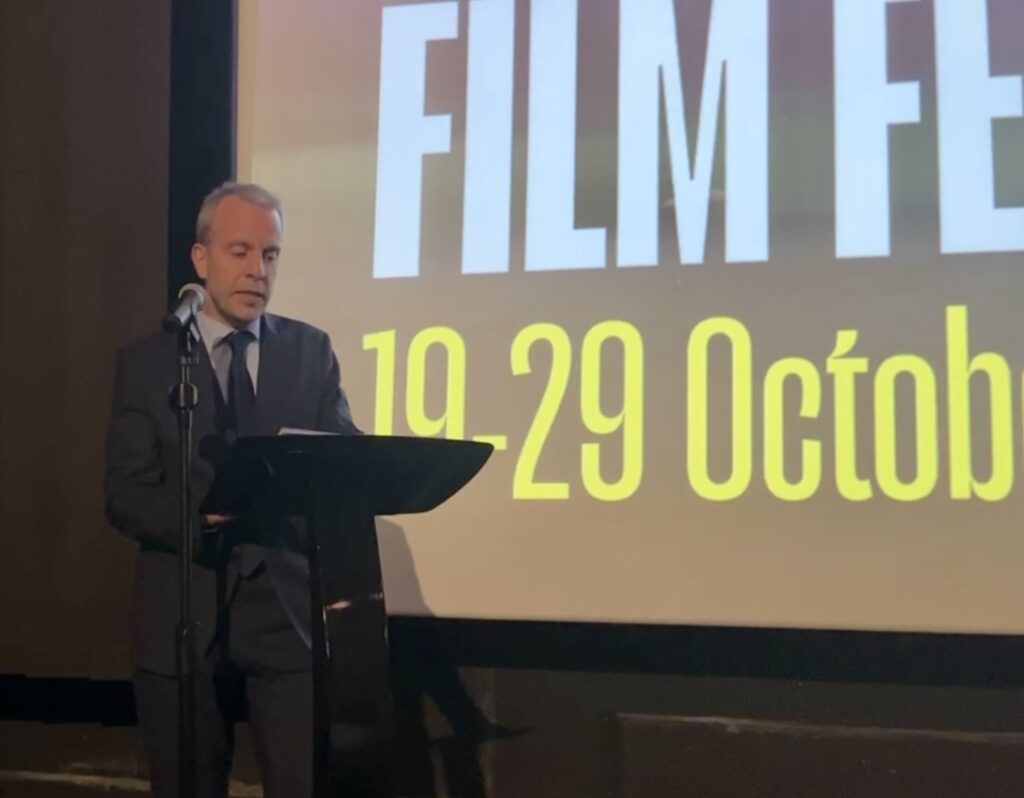
The Consul-General rightly observed that cinema is often regarded as a reflection of the society it depicts as it captures a specific moment, a specific historical juncture, and portrays the defining spirit or mood of that period. In this case, a Hellenic Zeitgeist, so to speak, and a perfect segue to the opening night film of the festival.

Asimina Proedrou's Behind the Haystacks is a surreal but tragic film. Set in 2015, it is based on the refugees winding their way from a war-torn Middle East to what was seen as a prosperous Europe and how their arrival on the shores of a remote village and wetlands in Northern Greece impacted on the local community.
The film opens with children playing on the edge of Doïrani Lake as locals celebrate in a panagyri-style festival nearby. The children stumble across two bodies in the reed beds of the lake and alert the villagers to this grim discovery.
In three distinct chapters, the events leading up to the tragic drowning of a Syrian refugee and her young son, and its haunting consequences, are presented through the lens of the three main protagonists in the film, in an elliptical fashion with overlapping and at times contradicting versions.
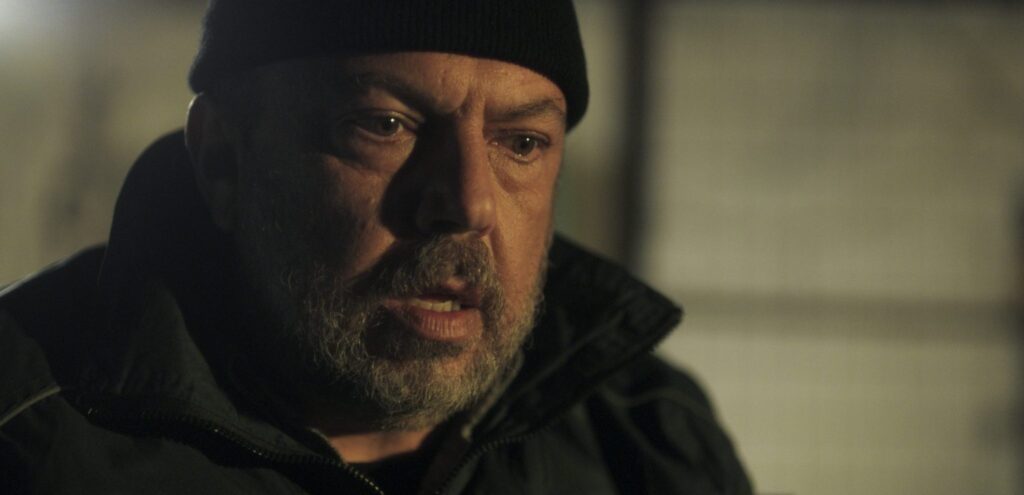
We first meet Stergios, a middle-aged fisherman and farmer and stern patriarch, who is struggling to make a living from fishing the lake and whose troubled past and mounting debts are about to catch up with him.
Maria, his devoted wife, is a devout churchgoer (outwardly at least) and as a mother ominously declares that she will do anything necessary to protect her family.

And finally we meet Anastasia, their spirited but defiant daughter, who yearns to break from the shackles of her father’s dominating personality and pursue her own dreams.
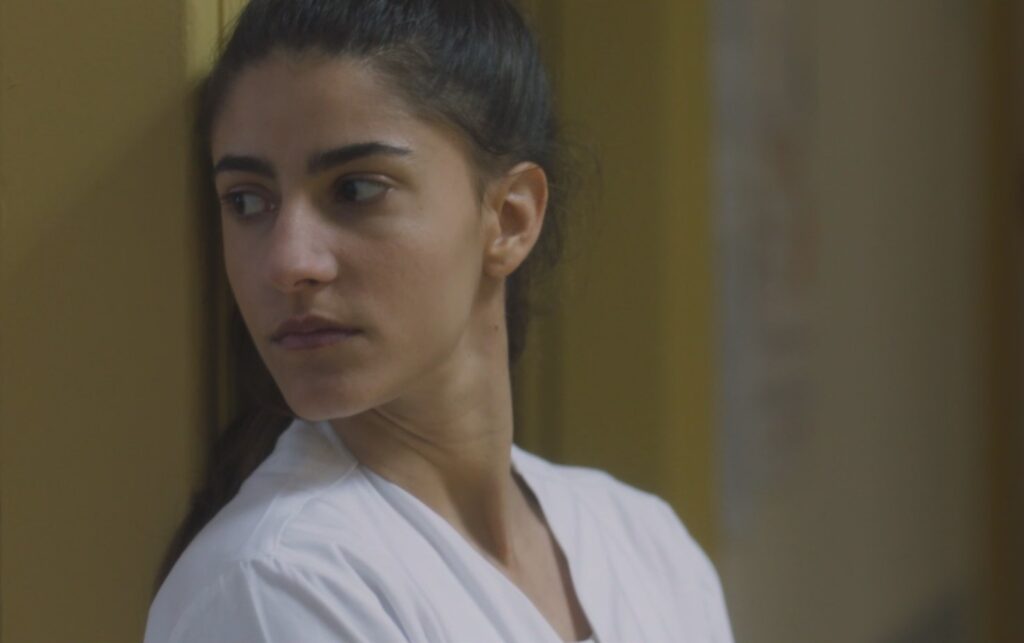
The arrival of mostly Muslim refugees who are located in a makeshift settlement camp on the shores of the lake is a cause of concern for some locals but seen as an opportunity to exploit by others.
Stergios, facing the possibility of a heavy fine and even jail for tax indiscretions, finally succumbs to the overtures of Maria’s nefarious brother to ferry refugees at night across the lake to North Macedonia for €1,000 a person. In a sense, he becomes a modern-day Charon, the mythical ferryman of Hades, who is seeking a fare to ferry hapless souls to the underworld.
Meanwhile, some villagers are trying to help the refugees, despite the warnings by the local Greek Orthodox priest that rendering assistance is a sin. Maria is seemingly torn between this religious admonition and her own humanitarian impulses. As all this unfolds, Anastasia, who is a trainee nurse but aspiring cabaret singer, is traumatised by a cruel twist of fate.
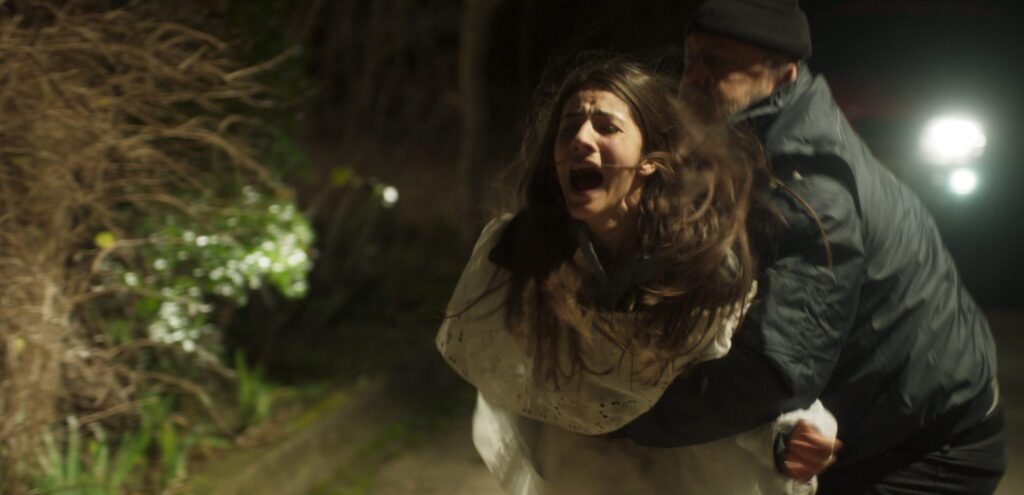
Each of their stories is related in three different but overlapping chapters.
The cinematic technique employed by Asimina Proedrou of presenting multiple points of view recalls, indirectly, the great film director Theo Angelopoulos’ first movie, Reconstruction, itself set in a northern mountain village, where a murder is reconstructed from different perspectives and not just played out in a conventional narrative. Proedrou in a sense engages in what Angelopoulos’ biographer, Andrew Horton, once described as a “reconstruction of reality”.
Doirani Lake is thought to be one of the richest fish lakes in Europe. Early in the film and in what is otherwise a serene setting, we see a fish just caught and desperately thrashing about on the fishermen’s boat, struggling for its last gasps of air. This confronting imagery is rather poignant for what is to come.
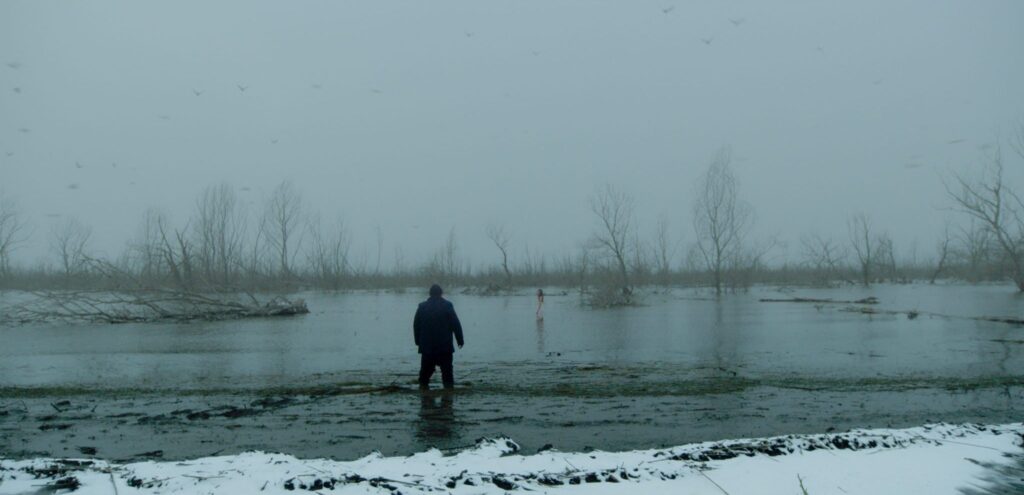
Each chapter begins with almost surreal vision of a burdened Stergios confronting the eerie lake, in one case as birds take flight and in another with a distressed Anastasia, in bridal white, struggling in the distance through the mud of the suffocating waters.
The director also takes us into the heart and soul of this Pontian village. On learning of the children’s gruesome discovery in the lake, some of the revellers at the outdoor panagyri try to play it down by resorting to myth and fantasy and as the film develops, we discover why.

In another scene, the film recreates the ancient Pontic satirical tradition known as Momogeri (Μωμόγεροι) which is usually performed in the period from Christmas to Epiphany. Stergios is wandering through the streets of the village with Anastasia, who is dressed as a symbolic bride, and other villagers wear sheepskins with masks and bells as they move from house to house, literally to wake up the village from its winter sleep.
On another level, as one reviewer has noted, the scene forbodes an embittered Stergios dancing into his own nightmarish hell.
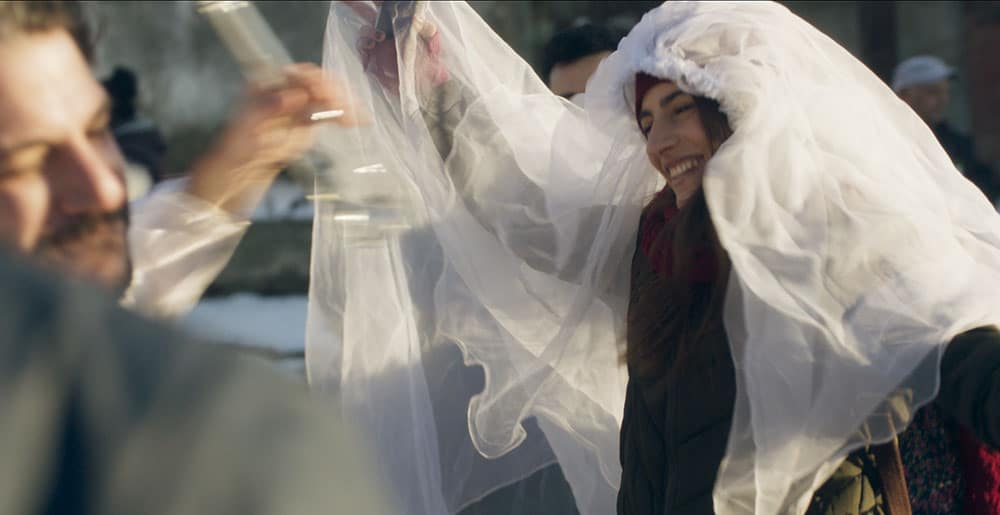
The consequences of the fateful drowning are far-reaching. When confronted with evidence of his involvement, Stergios retaliates with far-reaching consequences that profoundly impact his immediate family and the village. Will the truth utlimately prevail?
Without spoiling the ending, as we end up back at the panagyri on the banks of the lake, the film’s director’s statement of intent provides a clue:
“I wanted to make a film about how society pressures everyday people and their social relations and forces them into crushing decisions and corruption but without absolving them of responsibility.”
Or as the film reviewer, Amber Wilkinson, wrote:
“Behind The Haystacks becomes an intense psychological study of murky morality, ingrained community animosity to outsiders and the lengths people will go to for self-preservation.”
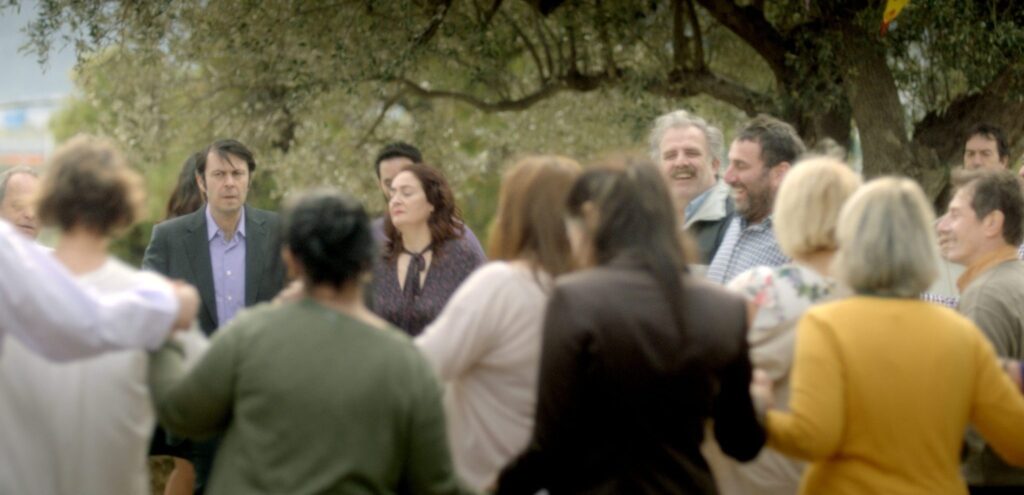
As the film nears its end the boisterous revellers - led by a group of intoxicated topless middle-aged men - are singing an old Epirote folk song Ένα βράδυ βγήκε ο χάρος (One Night Death Came Out) with a refrain that tragically echoes the moral quagmire in which the actors find themselves: “whoever sets foot in the underworld never comes back”.
Behind the Haystacks is an utterly surreal but dark Greek/Balkan tale that sheds a different light on the burgeoning refugee humanitarian crisis through the lens of a Greek village and the unfortunate clash of moral conscience, religious dogma and racial prejudice.
The film has won many plaudits and has received the prestigious Iris Award from the Greek Academy of Cinema. It has also been officially selected as Greece's contender for the Best International Feature Film category at the 96th Academy Awards.
Behind the Haystacks is a most worthy opening act for the Greek Film Festival.
George Vardas is the Arts and Culture Editor of Greek City Times, a sponsor of the Greek Film Festival. The scenes from the movie are courtesy of Myfilm.gr/The Argonauts.

